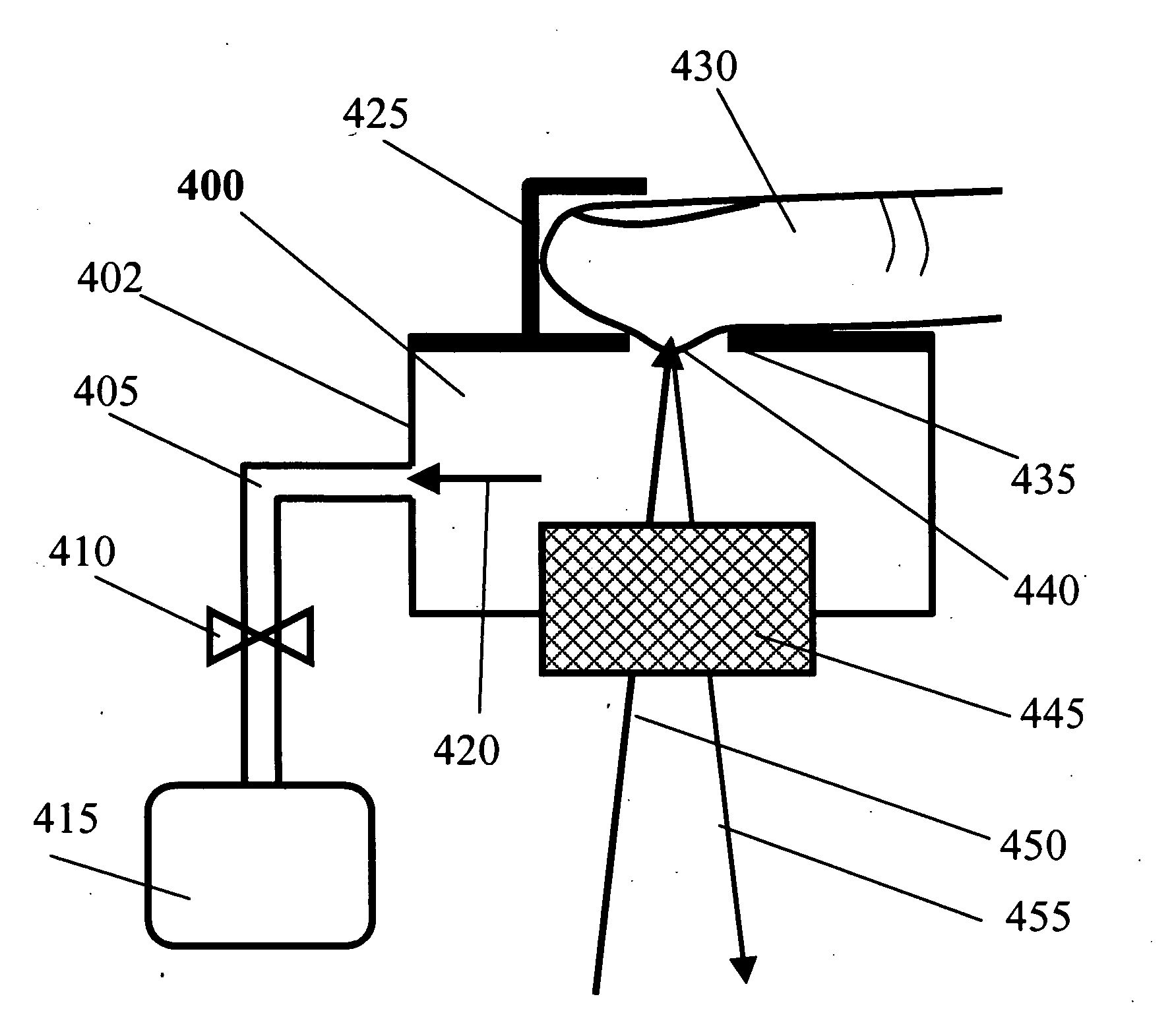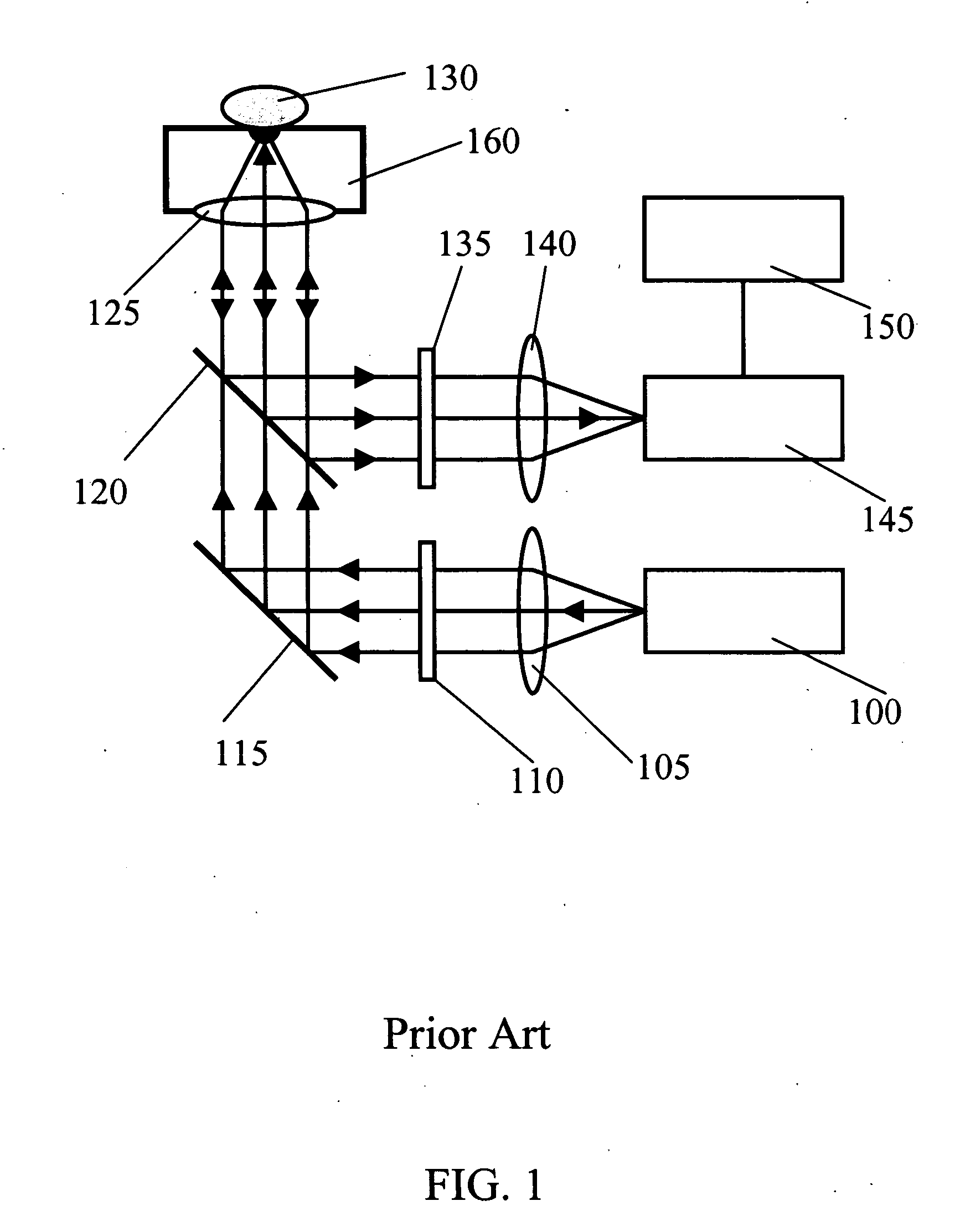Method and apparatus for non-invasive measurement of blood analytes
a non-invasive, blood analyte technology, applied in the direction of medical science, diagnostics, analysis by material excitation, etc., can solve the problems of pain and inconvenience, tight control of blood sugar, and inability to monitor blood glucose daily for diabetes patients, etc., to achieve linear blood amount reduction with time
- Summary
- Abstract
- Description
- Claims
- Application Information
AI Technical Summary
Benefits of technology
Problems solved by technology
Method used
Image
Examples
Embodiment Construction
[0038] The present invention provides a method and apparatus for non-invasive measurement of blood analytes with dynamic spectral calibration against the influence from skin and other tissues other than blood. The working principle is described based on Raman spectroscopy, but it can be applied to other lightwave methods including near-infrared spectroscopy, mid-infrared spectroscopy, infrared spectroscopy, reflectance spectroscopy, fluorescence spectroscopy, Fourier-transform infrared (FTIR) spectroscopy, polarization changes, scatter changes, and photo-acoustic spectroscopy.
[0039] Referring now to the drawings, FIG. 1 illustrates a basic Raman configuration of the apparatus used for non-invasive measurement of blood glucose level in accordance with the prior art (U.S. Pat. No. 6,167,290). It consists of five parts: 1) excitation laser 100, 2) Raman spectrometer 145, 3) light excitation and collection unit, 4) tissue permeation unit 160, and 5) data processing unit 150. The CW exc...
PUM
 Login to View More
Login to View More Abstract
Description
Claims
Application Information
 Login to View More
Login to View More - R&D
- Intellectual Property
- Life Sciences
- Materials
- Tech Scout
- Unparalleled Data Quality
- Higher Quality Content
- 60% Fewer Hallucinations
Browse by: Latest US Patents, China's latest patents, Technical Efficacy Thesaurus, Application Domain, Technology Topic, Popular Technical Reports.
© 2025 PatSnap. All rights reserved.Legal|Privacy policy|Modern Slavery Act Transparency Statement|Sitemap|About US| Contact US: help@patsnap.com



